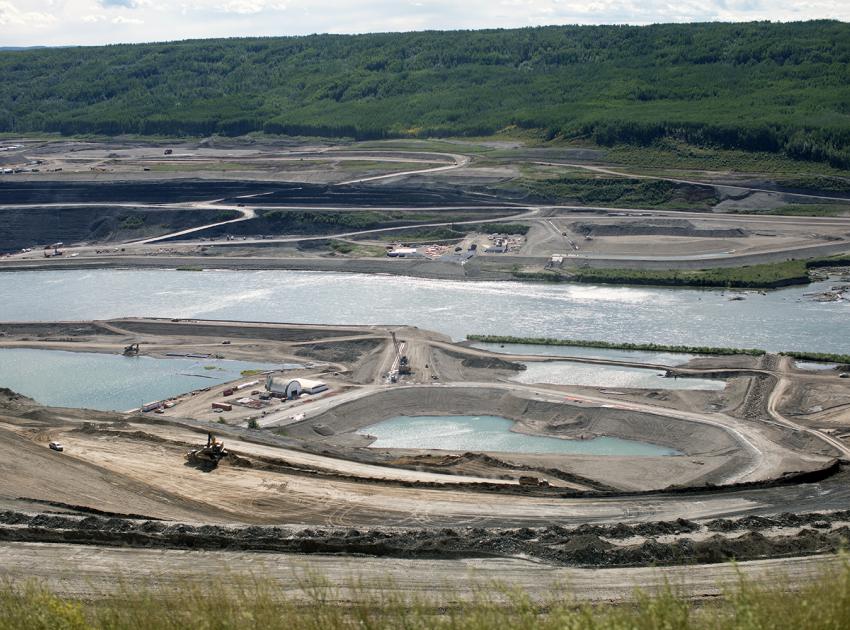Canada News
Construction to go ahead on Site C dam, but cost soars to $10.7 billion

The B.C. government had no choice but to complete the Site C hydroelectric dam rather than absorb a $4 billion hit to its bottom line by cancelling the project, which would have jeopardized plans for more spending on schools, hospitals and bridges, Premier John Horgan said Monday. (Photo: Site C Clean Energy Project)
VICTORIA—The B.C. government had no choice but to complete the Site C hydroelectric dam rather than absorb a $4 billion hit to its bottom line by cancelling the project, which would have jeopardized plans for more spending on schools, hospitals and bridges, Premier John Horgan said Monday.
The price tag for Site C is rising, with the $8.3 billion dam on the Peace River in northeast B.C. now estimated to cost $10.7 billion.
The government estimated the $4 billion cost of terminating Site C would amount to $860 for each B.C. resident. Horgan said he could not ask people to take on such a debt and get nothing in return.
The province also risked a credit downgrade and debt-servicing costs of up to $150 million annually if the project was cancelled. It could also mean a one time, 12 per cent rate hike that would last for a decade, Horgan said.
“We have listened,” said Horgan. “We have deliberated and we have debated and at the end of the day we have come to the conclusion that although Site C is not the project we would have favoured, and it’s not the project we would have started, it must be completed to meet the objectives of our government.
”
The decision on the project’s future is one of the first major challenges the minority NDP government has faced since it came to power this summer.
Site C has been at the centre of a polarized debate between politicians, environmentalists, First Nations, labour groups and landowners in the Peace River Valley.
Horgan said he has met with Indigenous groups, construction workers, environmental activists and residents about Site C.
“I can say without hesitation this is a very very divisive issue,” said Horgan, adding he and his wife have argued about the dam.
The decision to complete Site C, which has been under construction for more than two years, caused intense debate in his caucus and cabinet, he said.
The $4 billion cost of cancelling the project could fund 66 secondary schools or 11 hospital projects, 12 highway improvements or three bridges in Metro Vancouver, Horgan said.
Former premier Christy Clark gave Site C the green light in December 2014, saying the decision to approve the province’s most expensive megaproject marked a historic milestone that would be felt for a century.
Horgan said the Liberals have taken Site C to the point of no return.
“They gave us, sadly, just one clear choice,” he said. “That was to proceed with a .
7 billion project or cancel a project and absorb $4 billion in construction and remediation costs.”
National Chief Perry Bellegarde of the Assembly of First Nations said Indigenous people will likely take the matter to court.
“I am confident that First Nations will continue their efforts to stop Site C and the next step will be legal challenges,” he said in a statement.
The government asked the B.C. Utilities Commission to determine if Site C would be finished by 2024 and on budget, while providing advice on proceeding with the project, suspending construction until 2024, or terminating it.
The province’s independent energy regulator concluded in its report last month that the dam is over budget and behind schedule.
The Opposition Liberals, who started Site C, applauded the NDP’s decision.
“For the businesses, for the families, for the local First Nations in the area, this is the right decision,” said Mike Bernier, who represents Peace River South in the legislature.
Green Leader Andrew Weaver said the decision could end up costing more than the new estimate of $10.7 billion.
“Today, it’s $10.7 billion projected cost,” he said. “So, who believes the $10.7 billion? I certainly don’t.”
Site C has been part of the province’s hydroelectric generation plans since 1958.
It will be the third dam on the Peace River in northeastern B.C., flooding an 83-kilometre stretch of valley near Fort St. John. It will provide enough power to light up to 450,000 homes a year.
BC Hydro’s environmental impact statement for Site C forecasts flooding more than 5,550 hectares of land, of which at least 3,800 hectares is agricultural. Site C would also flood Indigenous heritage sites and force up to 20 families, many lifelong ranchers, to move.





















